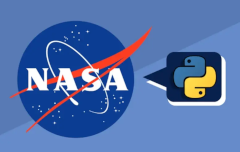Free/libre software, hardware, and ideals is building the next Space Age
Four new resources worth exploring every Friday
FOSS IN SPACE #2: Space Python
Here are this week's four free/libre space resources that are worth exploring:
1. Python and SPICE Make Space Very Nice

SPICE (Spacecraft, Planet, Instrument, C-matrix, Events) is a solar system geometry system for space science missions developed by NASA, comprising a library and toolkit. SPICE is freely available to space agencies and mission planners (and amateur coders) around the globe. SpiceyPy is an independently developed wrapper that enables Python coders to work with the SPICE toolkit.
Link: SpiceyPy
2. Where is the Earth
Where is the Earth exactly located with respect to the Sun? Let's use Python to find out! Using a YouTube tutorial courtesy of Space Science with Python by Astroniz, I use SpiceyPy to write a Python program that calculates our planet's current location and velocity.
Link: Where is the Earth?
3. FOSStronomy
KStars is a desktop planetarium application, creating a graphical simulation of the night sky from any location, date, and time on Earth. It displays the planets, comets, asteroids, satellites, 13000 deep-sky objects, and up to 100 million stars (with additional add-ons). The latest version 3.7.5 was released this week, and there is a flatpak (currently still 3.7.3) available to install on any Linux distribution.
Links: KStars and Flatpak package
4. Libre Liftoff
Two payloads of interest to the FOSS community were carried into space on the maiden flight of the Ariane 6 rocket. SIDLOC is a collaboration between the Libre Space Foundation and the ESA to develop an open, low-power standard for identifying and locating spacecraft. Using the crowd-sourced SatNOGS network, the goal is to provide a source of orbital elements and spacecraft identifications independent of any nation or agency. Curium One is a demonstration platform for creating a FOSS framework for satellite systems. It featured 15 newly designed open-hardware PCBs, created by the community with the help of Planetary Transportation Systems.
Link: An open-source guide to the galaxy: Our journey with Ariane 6
Quote of the Week: "The real lesson of the last century's genocides is this: We are not endangered by a lack of resources. We are endangered by those who believe there is a shortage of resources. We are not threatened by the existence of too many people. We are threatened by people who think there are too many people.... A free Mars would provide a decisive edge to the forces of liberty in the struggles of the future. But it could do even more. It could prevent such wars altogether by undermining the limited resource belief structure that is their driving cause. Why kill each other fighting over provinces when by working together we can create planets?"
— Robert Zubrin, The New World on Mars: What We Can Create On The Red Planet
Until next week....Onward!
You can like, share, or comment on this post on the Fediverse 💬
» Next: FOSS IN SPACE #3: Ingenuity
« Previous: Where is the Earth?
